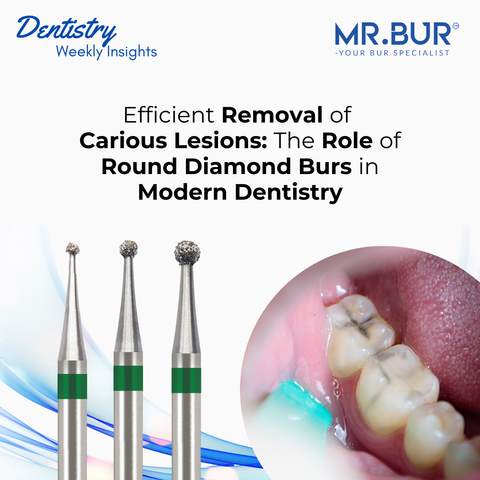Gingival retraction cords and dental burs work in harmony to deliver precise and superior results for Class V restorations, as well as crown and bridge preparations, in modern restorative dentistry. By understanding the synergy between these two tools, dental professionals can enhance patient comfort, reduce procedure times, and achieve better clinical outcomes. Implementing these techniques could bring valuable improvements to your own practice. Let’s explore further!
What is a Gingival Retraction Cord?
A gingival retraction cord is a thin, thread-like material placed into the gingival sulcus (the small gap between the tooth and gum) to gently displace gum tissue away from the tooth. This creates a clear, dry working area and exposes the tooth margins for more accurate impressions and restorations. Retraction cords come in different types—braided, knitted, and twisted—each designed to suit various gingival conditions.
Types of Retraction Cords
- Braided Cords: Offer firmness and structure, ideal for cases requiring significant retraction.
- Knitted Cords: Expand slightly when wet, providing a gentler retraction suitable for sensitive tissues.
- Twisted Cords: Flexible and easy to manipulate, perfect for minor retraction needs.
Knitted cords are incredibly effective when dealing with patients who have delicate gingival tissue, as they provide just enough pressure without causing undue discomfort.
Class V Restorations: How Gingival Retraction Cords and Dental Burs Improve Outcomes
Importance of Gingival Retraction in Class V Restorations
Class V restorations involve restoring areas near the gum line, which can be challenging due to the proximity to soft tissue. The use of gingival retraction cords helps to keep the area dry and free of gum interference, making the procedure more efficient.
Step-by-Step Guide to Crown and Bridge Preparation Using Retraction Cord and Dental Burs
Initial Tooth Preparation
The first step in crown and bridge preparation is to reduce the tooth structure to create enough space for the prosthesis. Diamond dental burs are ideal for this stage due to their cutting efficiency and ability to shape the tooth quickly.
- Procedure: Begin with a super coarse diamond bur to achieve the desired tooth reduction, then switch to a coarse diamond bur for smoother contouring.
For more details about the step-by-step procedure, visit our guide on Zirconia Crowns: Step-by-Step Preparation.
Placing the Gingival Retraction Cord
After the initial tooth reduction, the gingival retraction cord is placed into the sulcus to expose the tooth margins for accurate impressions.
- Place the retraction cord gently into the sulcus using a non-serrated cord packer, starting from the interproximal areas and working around the tooth in a circular motion.
- Leave the cord in place for 5-10 minutes to allow the gum tissue to retract sufficiently.
Dentist Insight: The success of gingival retraction is significantly influenced by selecting the appropriate cord size that matches the gingival sulcus depth. This precise selection ensures adequate retraction without causing trauma to the tissue. Pairing this technique with the use of premium dental tools like Mr. Bur Crown & Bridge Preparation Kit FG enhances the overall outcome.
Refining the Margins with Fine Grit Diamond Burs
Once the cord has been placed, use Fine Grit Diamond burs to refine the tooth margins and create a smooth surface for the crown or bridge.
- Use a fine-grit diamond bur like Mr. Bur 36F Fine Grit FG Taper Round Burs to polish the prepared tooth, ensuring that the margins are well-defined and ready for the impression stage.
- Continuous water irrigation during this step helps to keep the tooth cool, preventing heat damage and enhancing patient comfort.
Taking the Impression
The retraction cord is removed just before taking the impression, ensuring that the gum tissue remains retracted for a clear view of the margins. This step is crucial for capturing an accurate impression that will guide the fabrication of the crown or bridge.
Benefits of Combining Gingival Retraction Cord and Dental Burs in Restorative Procedures
Enhanced Precision and Control
The use of retraction cords ensures clear visibility of the tooth margins, while dental burs allow for precise shaping and finishing, leading to high-quality restorations.
Improved Patient Comfort
When these tools are used correctly, they minimize gum irritation and tissue damage, making the procedure more comfortable for the patient.
Time Efficiency
The combination of gingival retraction cords and dental burs helps reduce chair time by streamlining the preparation and impression-taking processes.
Clinical Tips and Best Practices
- Cord Placement Techniques: Use a cord size that matches the gingival sulcus depth to avoid trauma.
- Bur Selection Criteria: Choose the right grit level for your burs depending on the specific needs of the restoration.
- Timing for Optimal Results: Place and remove the retraction cord just before taking the impression to ensure maximum retraction.
Closing Remarks
Combining gingival retraction cords with the precise action of dental burs is key to achieving optimal results in crown and bridge preparations as well as Class V restorations. These tools work together to improve visibility, accuracy, and patient comfort, leading to long-lasting and high-quality dental restorations. By integrating these techniques into your practice, you can ensure better outcomes and increased patient satisfaction.
MR. BUR US provides a wide range of dental burs globally.
Check out the related topic:
- Advance Guide: 10 Steps to Posterior Crown Preparation
- Zirconia Crowns: Step-by-Step Preparation
- This is How to Remove Zirconia Crowns Correctly (Avoid Common Pitfalls)
- How Long Do Zirconia Crowns Really Last? Discover the Truth!
Get yours Now:
Diamond Burs, Carbide Burs, Surgical & Lab Use Burs, Endodontic burs, IPR Kit, Crown Cutting Kit, Gingivectomy Kit, Root Planning Kit, Composite Polishers, High Speed Burs, Low Speed Burs
Subscribe our newsletter now!







